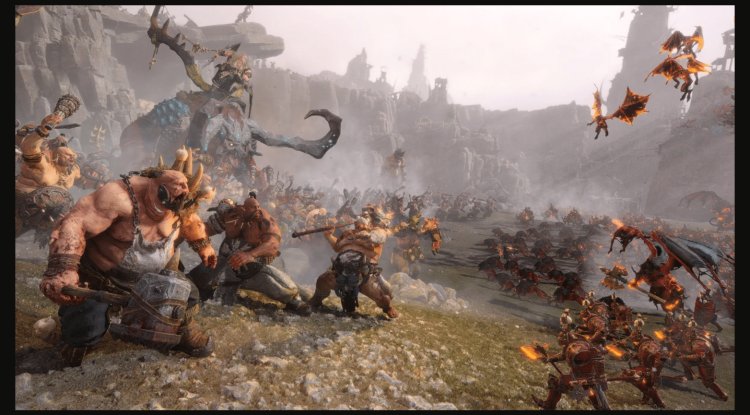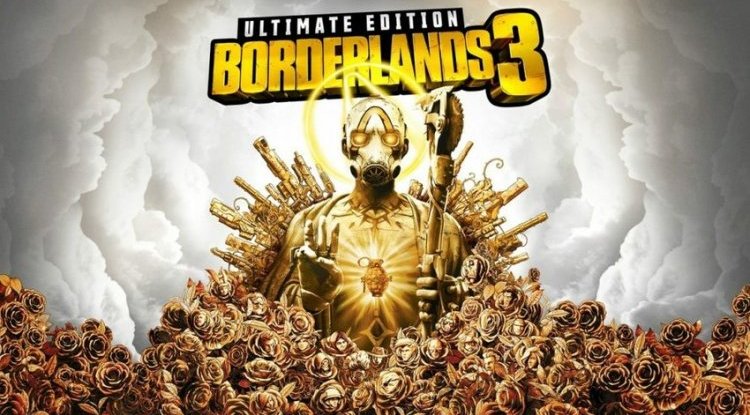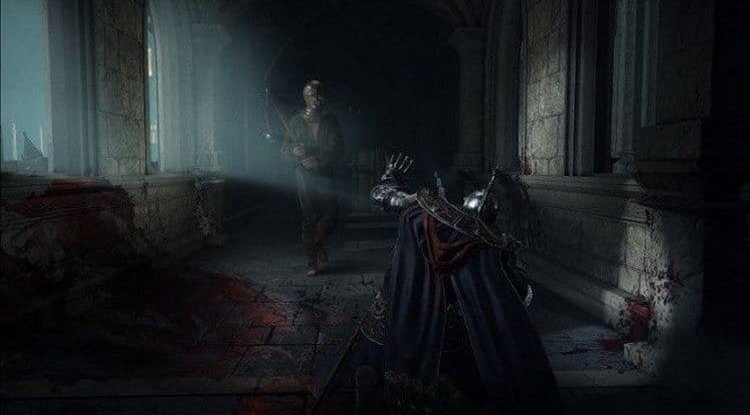Total War: WARHAMMER III, magnificent trilogy

We've practically lost track of how many Total War installments have been released. Despite the fact that not all of them have been at the same level, the British company The Creative Assembly has managed to keep it as one of the longest-running and most successful video game franchises in the strategy genre. Originally designed and developed in historical settings, few (including the authors) anticipated that adapting it to the Warhammer fantasy realm (original Games Workshop board games) would be so fruitful.
The first Warhammer installment of 2016 was well received by long-time fans of the story. And then the second half arrived, even better, which we believe attracted tens of thousands of new followers based on sales data and reviews. After a respite of remastering earlier games and a return to true historical settings with Total War: Three Kingdoms, which drew us closer (in the best manner possible because it was another high-quality installment) to the epic struggles of ancient China, the Warhammer trilogy comes to an end.
Total War: WARHAMMER III, requirements
We'll start by going through the hardware requirements for running the game. On paper, the minimums are somewhat limited. Too. To be honest, we don't think you'll have a good time with them.
- Processor: Intel Core i3 / Ryzen 3 series.
- Graphics: NVIDIA GTX 900/AMD RX 400 series | Intel Iris Xe.
- 6GB RAM.
- 120 GB of disk space.
- DirectX 11.
The recommended requirements are more in line with what is required to enjoy the game. It's not a shooter, but it does necessitate a level to manage some of its components, such as real-time combat and the main map, which, as we'll see later, is big, intricate, and has a plethora of aspects.
- Processor: Intel Core i5 / Ryzen 5 series.
- Graphics: NVIDIA GeForce GTX 1660 Ti/AMD RX 5600-XT series.
- 8GB RAM.
- 120 GB of disk space.
- DirectX 11.
Total War: WARHAMMER III, features
"The trilogy's devastating conclusion approaches… Rally your forces and enter the Realm of Chaos, a terrifying dimension where the fate of the planet will be decided. Will you defeat your demons…or lead them? This is how a game is defined from the start, combining with great success the usual turn-based strategy of empire building and tactical warfare that takes place in real-time.
This has been the operation of the whole series, despite the fact that improvements have occurred at all levels in the several additions that have been released. Of course, the use of a fantastic universe has freed the developer in this trilogy from the constraints that historical recreations always have and allowed him to deploy additional novelties, in the same visual environment, in factions, in-game mechanics, in combat, and in general throughout the game.
Infinite and varied gameplay
Total War: WARHAMMER III is not just the conclusion of a wonderful trilogy, but it is also one of the best games ever made. The game provides an incalculable number of hours of gameplay. To begin, it provides a single-player campaign with seven different factions and an additional eighth that is free for anybody who pre-ordered the game.
The main factions are those that comprise the "four Ruinous Powers" who want to plunge the planet into demonic rot. Nurgle is the Plague God, Slaanesh is the God of Excess, Tzeentch is the Changer of Things, and Khorne is the God of Blood and Carnage. We also have the Daemons of Chaos campaign as an introduction to them, which we recommend playing before the other four. On the border between worlds, two other mighty kingdoms (humans) offer resistance: the warriors of Kislev and the Great Cathay, although, as previously stated, the Ogre Kingdoms have been incorporated as well.
Each faction has its own commanders, units, settlements, structures, objectives, game mechanics, research path, and so on. They can also be played under the leadership of different Legendary Lords on each side, some of whom are available from the start of the campaigns and others who must be unlocked later. This increases the game's lifespan to infinity because each side is treated as a separate game. In addition, similar to WARHAMMER II, you can expect a slew of DLC and expansions with additional factions and features in the future.
And even more content. Given the series' steep learning curve, Creative Assembly has produced an additional campaign as a prelude. It is almost required for new players and highly recommended for those who are familiar with the series, as it not only reviews the basics but also places us in a general tale setting.
There is also a multiplayer campaign in the game, with both online and local network matches available. Finally, the Battles add the finishing touches to the game modes. There are various kinds. Ones that you can invite your pals to. Others are pitted against AI that you can completely configure in maps, armies, and adventure fights by race, as well as multiplayer rooms. That being said, if you enjoy the strategy genre, you will enjoy unlimited gaming. This game will undoubtedly appeal to both new and longtime enthusiasts.
Interface with everything at your fingertips
Those who have previously played Total War: WARHAMMER II will be right at home. Many of the concepts seen in it, as well as throughout the series, are included. The attention to detail in the visual part is great, from the cinematics that introduces us to the plot to the sound, which, while not the finest in the game, complements the game perfectly.
The UI for the campaign overview is similarly familiar. At first sight, it may appear straightforward, but nothing could be further from reality. There's a lot to see and do, but only if you want to. It features keyboard shortcuts for access, but it can be managed easily by clicking the mouse and allows you to manipulate all of the components.
One of the menus is the standard game menu, where video, sound, and saved games are managed, while another is an information drop-down menu that the user can use at any time. In addition to the typical Total War mini-map, with built-in zoom that allows you to set markers at specific points that you feel relevant for fast transfer to them, it includes the event view of the world, provinces, your lords, and heroes, or known factions.
If the previous groupings are the interface's generals, each faction has two alternative frameworks based on their objectives and game mode. The menu in the center of the screen only has the treasure that we have at any one time, which is generated from our level, commerce, towns, and structures, or from fights or missions. A factor to consider, particularly in light of the army's high maintenance costs.
The bottom action menu is likewise familiar from Warhammer II, with quick access to common points such as campaign objectives, diplomacy, the strategy tree, or the shift change button, which we must not do without first studying the notifications that notify us of what we can do on that shift. The remaining buttons are unique to each group. And, as previously stated, playing with one or the other is the same as if we were in different games.
Huge campaign map
Total War: WARHAMMER III's total map is massive, maybe the largest in the series. It is a world map separated into regions where the various factions and their leaders can be found. They all begin on the same map, but in different places. It has a gigantic Total War-Esque zoom level that works perfectly with the mouse wheel and is visually beautiful in highly detailed 3D. The user can select the one that is most useful at the time, such as zooming in to examine all of the details.
Alternatively, you can reach the strategic map by zooming out to the maximum. It enables us to observe the portion of the region that we are familiar with, as well as the control of the area specified by our group and that of rivals and allies in different hues. It offers numerous filters based on ownership of each region, diplomatic status, control, or growth, and it allows you to get broad information on how we are operating the campaign, as well as locate rivals, allies, capitals, or resources.
The mapping includes various areas, such as savannahs, mountains, ice, or volcanic areas, as well as settlements that, over time, can become true fortresses, defensive with varying degrees of protection in walls and towers, offensive because that is where we can create the buildings that will give us access to different units for the army or the creation of new legendary lords and heroes.
The control of the cities that comprise the regions is critical because they are also in charge of ensuring resources, population growth, and the maintenance of public order. You can't create everything and everywhere at the same time. Each character has access to facilities based on their traits, while some are only enabled in specific places and some are unlocked by improving the technological level. The weather also plays a factor, and if you take cities in locations where your faction is not appropriate, you will face severe penalties.
The rest of the gameplay adheres to the saga's standard: turn-based strategy in the form of empire-building. And there's a lot to do in each of them as the campaign map's time progresses with each turn. In the one that relates to you, you handle everything we've discussed, the overall strategy, the improvement of settlements, or the completion of particular objectives with a short time frame to complete them. And you march your forces around the map in the number of movements permitted by your level. Continue doing so because your opponents will be reinforced with each turn.
Improvements in diplomacy and research
Diplomacy is one of the parts covered in this edition; it is more balanced and provides improvements in terms of interest. During your turn, you can negotiate with any faction you've uncovered, proposing trade deals or non-aggression pacts. Alternatively, you may breach agreements with third parties. As your connection improves, you will gain access to military access, the defensive alliance, and finally, when you are strong enough, you can try to convince him to join your confederation and incorporate his faction into yours.
The ability to create outposts within friendly towns to recruit troops for your army is one of the game's new features. In addition to increasing the number of troops, it is a wonderful way to create a more diverse army and compensate for any shortcomings in your own army's composition. You can also exchange territories and borrow allied armies to safeguard specific areas or distract your main forces from their activities.
Another new feature is the so-called "balancing agreement." It is intended to alleviate the frustration of attempting to find a solution that the opposing group will accept and to encourage them to honor prior agreements, as in earlier games some factions were too apathetic about sharing their wars. You can even threaten uncooperative factions if you have a high enough fear rating for them. It is impossible to complete the game's objectives on your own, thus any improvements here are welcome. Diplomacy is a weapon that is almost as vital as combat.
It contains additional parts for exploring new technologies, similar to other empire-building games. However, it does not work the same way for all sides. Some feature a standard strategic tree in which military, commercial, or social technologies, or access to certain structures or units, are achieved in a set number of rounds.
Other factions lack all of this and are committed to strengthening the capabilities of our army's leaders based on the 'Demonic Glory' that we acquire each turn, global chaos, or the chaos of each of the four gods of chaos present in the game. and which we can pick based on our behavior Another example of the enormous variety of playing with one side or another, even depending on the legendary lord you start with. Combat: "total war"
The campaign map's turn-based strategy is incredibly engaging, but for those who like action, the battle mode is another game in itself, and for some, the most fun of the story. While several products do the same (or better) than Total War in the strategic turn-based mode (see Civilization), the combat mode has been the series' defining feature since the first Shogun.
This battle mode is played in real-time with various speed settings and a pause that may be activated when the conflict becomes ugly (and it will) to offer you more peace of mind when giving orders. It allows you to control many armies and a vast number of units on screen, with different tactics depending on the type of land, the capabilities of your own and opponent units, and whether you want to defeat merely a rival lord, an entire army, or a settlement.
And that's just the broad map; later on, you'll have to send your forces to the domains of the gods of chaos and pass various tests before fighting the game's deadliest bad guy.
Magic matters in a fantasy game, and it matters even more in the world of the gods.
Despite the fact that there are various victory criteria, they all end up going to war. Units are by far the most expensive thing to sustain in the game, thus protecting them as much as possible is essential. Sometimes it's wiser to cut our losses and run until we're more equipped. Other times, we shall be forced to battle with what we have. There are secondary missions that provide significant rewards but must be completed in a set number of turns.
The game options window allows you to control the difficulty of battles (as well as the campaign itself). The second, 'normal,' is the suggested one, to begin with, however, you can simplify it. If you're feeling brave, you can choose the more difficult option and add a realistic mode in which you won't have a radar map or contextual information. You will also be unable to slow down the battle or provide instructions while it is paused. Only for the finest players because it is nearly impossible and does not allow for even the slightest error.
Legendary Lords are the most crucial units in battle and in the game overall. There are dozens to pick from for each group, as well as others that will be unlocked as the game progresses. Actually, its capabilities dictate the entire sort of game, from the location of the map where we begin to the settlements that we can reach, the structures that we can build, the units that we can recruit, and a lengthy list of other things. We haven't had a chance to test them all, but they're all pretty different, even if they're all part of the same faction.
The gentleman's management gives place to a role portion that we enjoy. They are preconfigured, and their major statistics cannot be changed at first, but they can be changed significantly as they level up, and we may grant skill points in a variety of departments.
Each faction's army units are also distinct. Some are recognizable from prior games, while others are entirely new. The 'heroes,' special units that can be joined to the army or carry out tasks independently across the map, stand out in this group. They are recruited in cities in a separate sector and, like the rest of the units, can be recruited by the lords themselves.
We leave it here since a summary would be interminable; fans of the story are aware of it, and novices will discover it for themselves after many hours of practice if they want to master it.
Total War: WARHAMMER III is a must-have for every fan of strategy video games, as well as anyone looking to get into a genre that provides a lot of enjoyment and has an amazingly lengthy lifespan. Total War may not be the easiest brand to get into (due to its depth), but it is without a doubt one of the greatest you can play, with fifteen titles to select from and a variety of settings.
The saga was brought to Warhammer by Creative Assembly, and the result is as amazing as the universe itself. The third installment is a fantastic conclusion to the trilogy and the best Total War ever made. A massive, aesthetically complex terrain with a welcome playable prologue to get things started, as well as new factions with their own settlements, leaders, units, and rules.





































